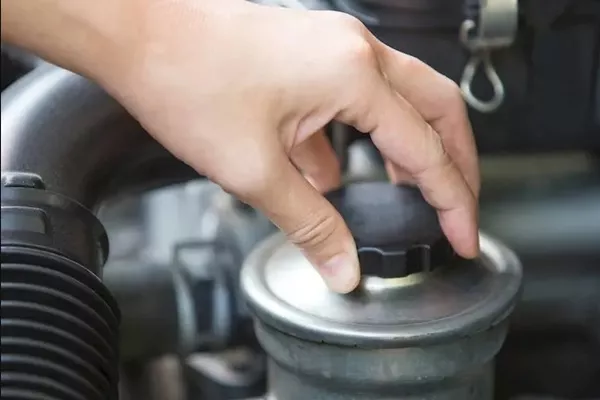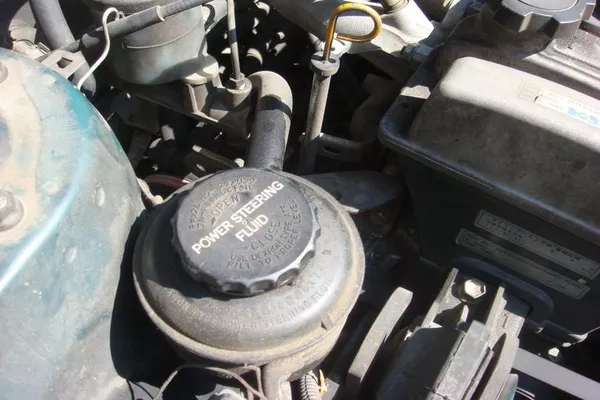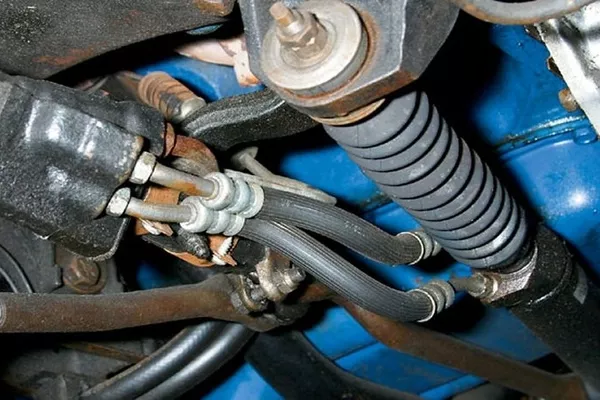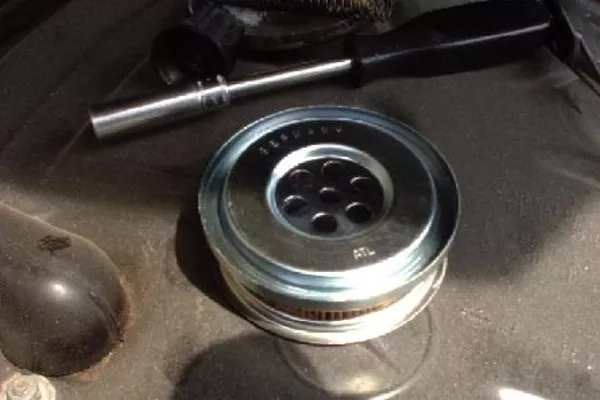The power steering system of your car provides ease and convenience to every drive. It is an important component in the performance of your vehicle, which is why you need to make sure that the power steering system is in optimal shape all the time -- or else, you will experience serious problems like uneven tear wear, hard steering, and many more.

The power steering system of your car provides ease and convenience to every drive
These issues will greatly affect the car’s performance and it can also compromise you and your passenger’s safety, too. It’s vital to take good care of the power steering system just like how you take good care of the interior, the car's finish, engine, battery and the whole vehicle in general. We, at Philkotse.com, want to assist you on how to properly take care of your vehicle's power steering system. Read on to find out how.
1. Keep the steering fluid purely clean and at the right levels
The power steering fluid is crucial to the whole health of the power steering system. A vehicle should not lose power steering fluid, this means you should always inspect for leaks if fluid appears to be running out quickly. If you squeaking or squealing when turning, or if it’s harder to turn the steering wheel, then there might be a leak or the system’s fluid is low.
Also, dirty fluid affects the efficiency of the system and can possibly ruin other parts. Don’t forget to regularly inspect the level and clarity of the system’s fluid at the reservoir of the power steering.

A vehicle should not lose power steering fluid
>>> Read more: Top 4 essential fluids in your car.
2. Inspect hoses
The system has two hoses where the fluid of power steering will flow through. The first hose delivers the fluid to the pinion and rack, and the other hose returns the fluid to the power steering reservoir. Generally, these hoses are made of rubber that deteriorates over time.
It is also prone to cracking, especially when it is exposed to extreme weather conditions. Just like the power steering fluid, you should also check the condition of these hoses regularly. You can also have all the hoses throughout your vehicle inspected for any leaks, cracks, and wear.

The system has two hoses where the power steering fluid flows
3. Replace the filter
The power steering system also has a filter that needs to be replaced as often as suggested by the manufacturer (usually once every year). If you know how to do it, then you can probably replace the filter by yourself. If not, then you can contact a professional mechanic to do the job for you.

The power steering system also has a filter that needs to be replaced as often as recommended
>>> Related: Can you use transmission fluid for your power steering?
4. Change a damaged pump as soon as possible
The power steering system uses a hydraulic pump that pumps the fluid through the system. Pump failure means the system will not be properly lubricated. Once you start hearing unusual whining or whirring sounds every time you use the steering wheel, it can be a sign of a damaged power steering pump.
If you ignore power steering symptoms like this one, it often results in expensive damage. To avoid future headaches, immediately have your pump checked and replaced in case it is necessary.

The power steering system uses a hydraulic pump that pumps the fluid throughout the system
5. Keep an eye out for possible signs of failure
Every time you experience something off in your vehicle, it’s important to immediately bring it to an automotive specialist for an inspection. Some of the most common signs of power steering problems include difficulty steering, tight-feeling steering, and unusual noises when turning.
If you experience any of these signs, it’s crucial to have the power steering system checked as soon as possible to avoid further damage to the system -- and to assure your safety.

One most common sign of power steering problems include difficulty in steering
>>> Check out: 7 Signs of a Bad Steering Wheel and How to Fix Them.
6. Symptoms of a bad or failing power steering
Along with proper maintenance, you should also be aware of the power steering system of your vehicle is failing or is in bad condition. This way, you can easily identify the problem and address it by having it inspected by a professional. Here are some of the most common signs of a bad or failing power steering system:
Whining noise when you turn the steering wheel of the car is one of the most common indications that something is wrong with the power steering system of your vehicle. The noise can be because of the low levels of fluid or a leak in the power steering pump
If you notice that the steering feels slow to respond to your command, there’s a high chance that you have a failing power steering pump, most especially if it is associated with a whining noise. You may also feel that the steering wheel is stiff when you turn it. Most of the time, steering issues will only be fixed by replacing the power steering pump.

There are some common signs of a bad or failing power steering system
If you notice any squealing sound every time you start the car, it could be because of a faulty power steering pump. You can also hear the same noise when you make sharp turns. If it looks like it's coming from your vehicle's hood, then it is a damaged power steering pump which causes the belt to slip.
If you hear groaning noises, it is an indication that the power steering system lacks fluid which can eventually damage the entire system, including the steering lines and rack.
The presence of a reddish-brown puddle under your vehicle can be a clear indication of a power steering issue. It can be from the steering hoses or line. But most of the time, it is from the power steering pump.
There might be a leak coming from the crack in the reservoir or pump housings. In this case, the pump needs to be inspected and diagnosed by a professional mechanic, and it will most probably need a replacement.
>>> Grab your attention: How to flush and bleed power steering systems like an expert.
7. What to do if the power steering starts to fail
If you’re driving and the power steering of your vehicle starts to fail, the first thing you need to do is to move to the safe side of the road. Once you are already at the side of the road and the car shuts off, try to restart it and check if the steering wheel resets and freely moves.
Recent posts
- 12 myths and facts about engine oil that you should know Aug 09, 2022
- Things you should know when calculating car value Aug 09, 2022
- Learn some basic concepts about cars Jan 25, 2019
- Easy cleaning tips for 5 different types of steering wheel Mar 04, 2021
- How to reduce car noises by taking care of the tires Nov 27, 2017












